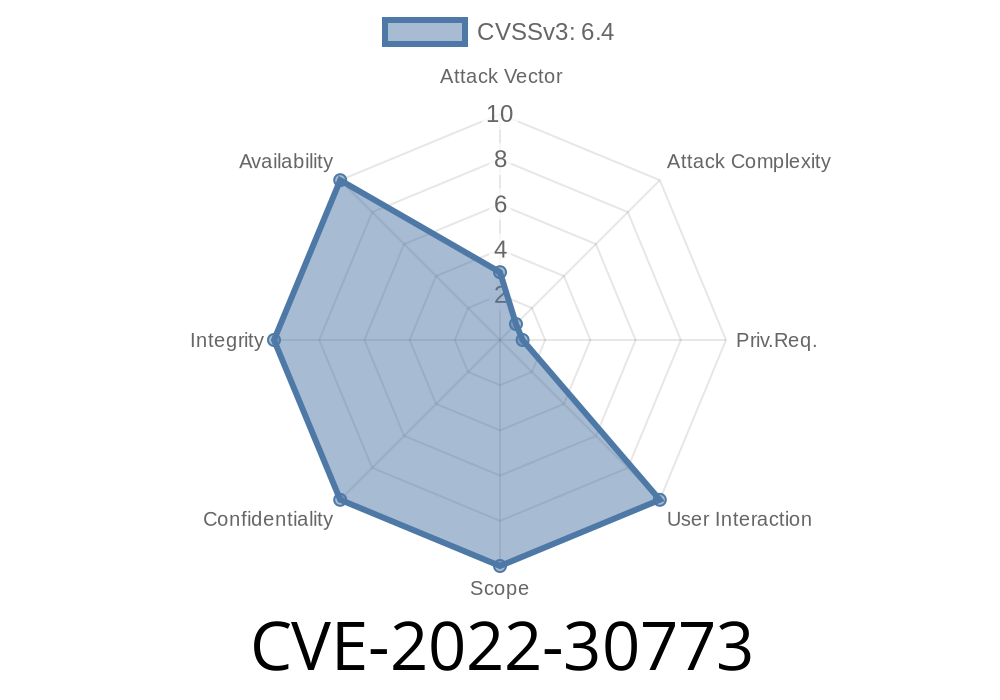A recently discovered vulnerability, CVE-2022-30773, involves DMA (Direct Memory Access) attacks on the parameter buffer utilized by the IhisiSmm driver. Essentially, attackers exploit this vulnerability using a TOCTOU (Time-Of-Check-Time-Of-Use) attack, by changing the contents of the parameter buffer after their values have been checked, but before they are used. This issue was discovered by Insyde engineering, and a fix is available in Kernel 5.4: 05.44.23 and Kernel 5.5: 05.52.23.
Details of the Vulnerability
The IhisiSmm driver is a core component of some systems, allowing for direct memory access. This vulnerability affects systems with this driver by potentially allowing for unintended data modifications due to the TOCTOU attack vector. The attacker is capable of modifying the memory contents after the system has verified the parameter values but before they have been effectively used.
Here is a simplified example of a vulnerable code snippet
# Check the parameter value
if parameter_buffer_value == expected_value:
# Some operations
...
# Use the parameter value
do_something_with(parameter_buffer_value)
It's important to note that the exploitation of this vulnerability requires specific knowledge of the target system, as well as being able to intercept and alter memory contents in the right window of opportunity.
Links to Original References
- CVE Details: https://cve.mitre.org/cgi-bin/cvename.cgi?name=CVE-2022-30773
- Insyde Security Advisory: https://www.insyde.com/support/security-advisories
- CWE-367: Time-of-check Time-of-use (TOCTOU) Race Condition: https://cwe.mitre.org/data/definitions/367.html
Exploit Details
To exploit this vulnerability, an attacker would first need to identify systems utilizing IhisiSmm driver. Next, they would have to figure out the exact memory location of the parameter buffer and trigger the TOCTOU attack at just the right moment. This would grant them control over the memory contents and potentially lead to various unwanted outcomes, including leaking sensitive information, corrupting data, and potentially gaining unauthorized access to system resources.
Mitigation and Patches
Users and administrators of systems with IhisiSmm driver should take immediate steps to mitigate the risk associated with this vulnerability. The issue is fixed in Kernel 5.4: 05.44.23 and Kernel 5.5: 05.52.23. Upgrading to these versions will patch the vulnerability and provide protection against potential attacks.
To upgrade your kernel, follow the instructions provided by your Linux distribution or visit the official Kernel website for further guidance:
- Kernel 5.4: https://www.kernel.org/pub/linux/kernel/v5.x/linux-5.4.23.tar.xz
- Kernel 5.5: https://www.kernel.org/pub/linux/kernel/v5.x/linux-5.5.23.tar.xz
Also, it's crucial to employ other security best practices, including regular system updates, strong access controls, and network segmentation to minimize the chances of successful attacks.
Conclusion
CVE-2022-30773 demonstrates the criticality of timely vulnerability patching and the importance of robust security practices. By staying informed about security advisories and applying necessary updates, users and administrators can significantly reduce the risks associated with such vulnerabilities and protect their systems against potential attacks.
Timeline
Published on: 11/14/2022 22:15:00 UTC
Last modified on: 11/18/2022 16:01:00 UTC
